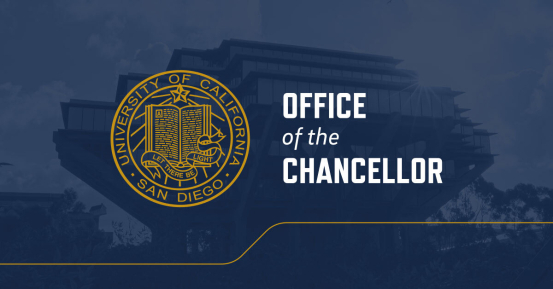By:
- Mary Cummings
- Inga Kiderra
Published Date
By:
- Mary Cummings
- Inga Kiderra
Share This:
Pandemic Brings Together New Friends and Partners at Learning
The pandemic has changed a lot of things. UC San Diego’s Partners at Learning is no exception. In a typical year, the university’s largest service-learning program connects about 500 undergraduates with more than 40 schools and organizations in under-resourced and underserved communities throughout San Diego. COVID-19 may have altered how the connections are made, but it hasn’t stopped them. In fact, the program’s reach has grown to include partners across the U.S. and even overseas.
Run by the Department of Education Studies at UC San Diego and known as PAL for short, the program, like most everyone else in education, has had to adapt to coronavirus.
“We had to shift to thinking about how to give the students enrolled in our classes the hands-on field experience that they sign up for, but give it to them remotely,” said Caren Holtzman, director of the PAL program. “It was challenging, but it opened the door for us to think beyond our partners in San Diego.”
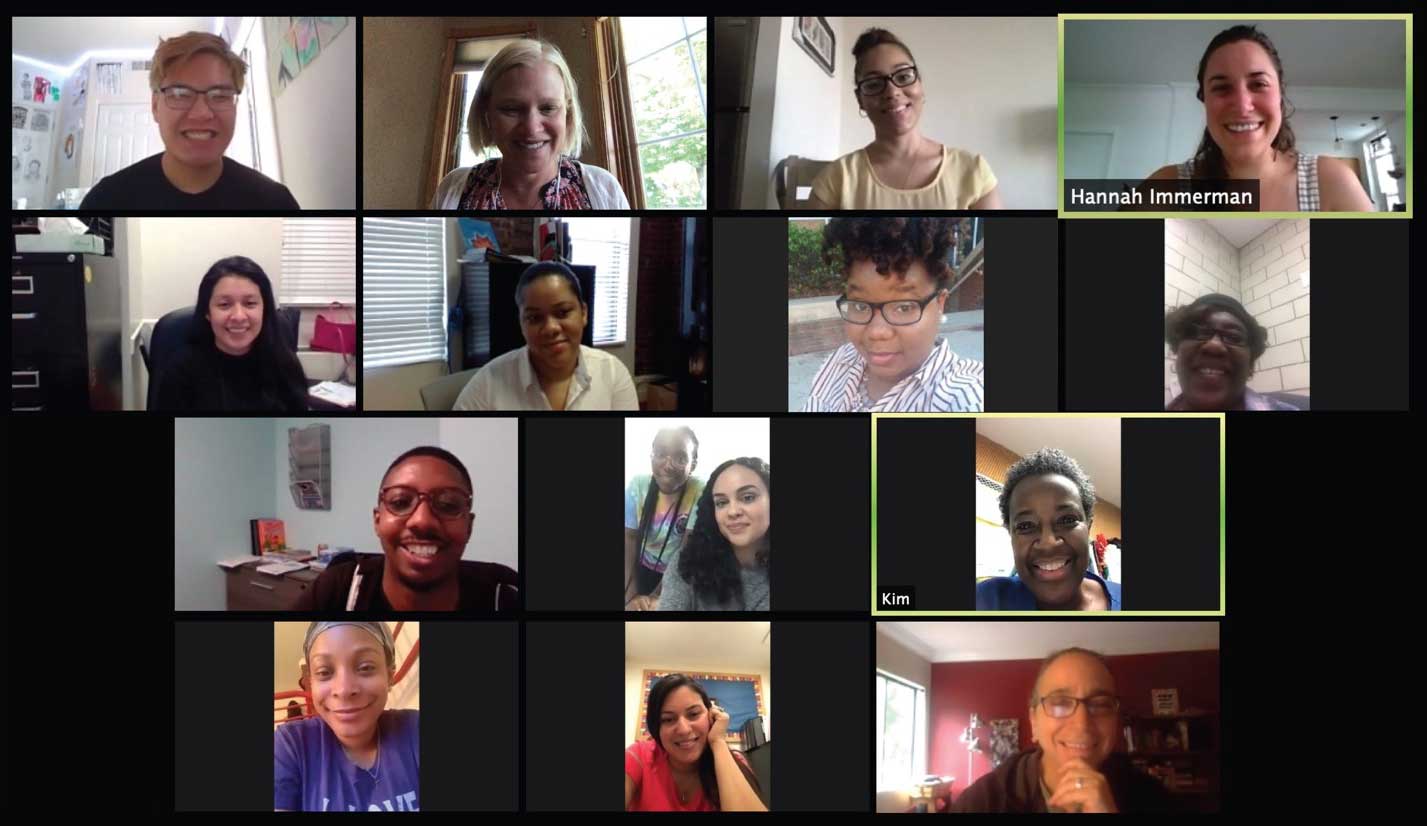
PAL tutors walk HFH staff who provide direct programming support to students experiencing homelessness through the top features of Zoom.
In the immediate pivot, in the spring and summer of 2020, as schools first closed and then switched to remote instruction, PAL professors tapped their personal and professional networks to set up several new partnerships. Instead of visiting San Diego-area school sites and after-school programs—to serve as tutors, mentors and role models—PAL students corresponded in spring with incarcerated youth in Louisiana prisons, contributed art work to a neighborhood project, worked with families through a local non-profit and worked directly with parents to help engage their kids in academic activities.
New partnerships were also started with Akanksha Schools in India and a refugee camp in Uganda as well as local organizations serving the children of refugees from Burma and asylees from Haiti.
PAL also began working closely with New York’s Homes for the Homeless.
A non-profit social services organization in New York City, Homes for the Homeless (HFH) operates four shelters and is committed to using family-based approaches to addressing family homelessness. The usual programming for the children includes childcare, after-school and recreation programs for K-12 students as well as camp. Collaborating with the PAL program has been a good fit for both partners.
“During the last several months, we have all experienced a new type of isolation that is especially difficult for children and youth who are missing the in-person connections with their teachers and friends,” said HFH Senior Programs Associate Hannah Immerman. “It has been wonderful to connect the HFH youth to the PAL students who are so thoughtful, caring, experienced and reliable.”
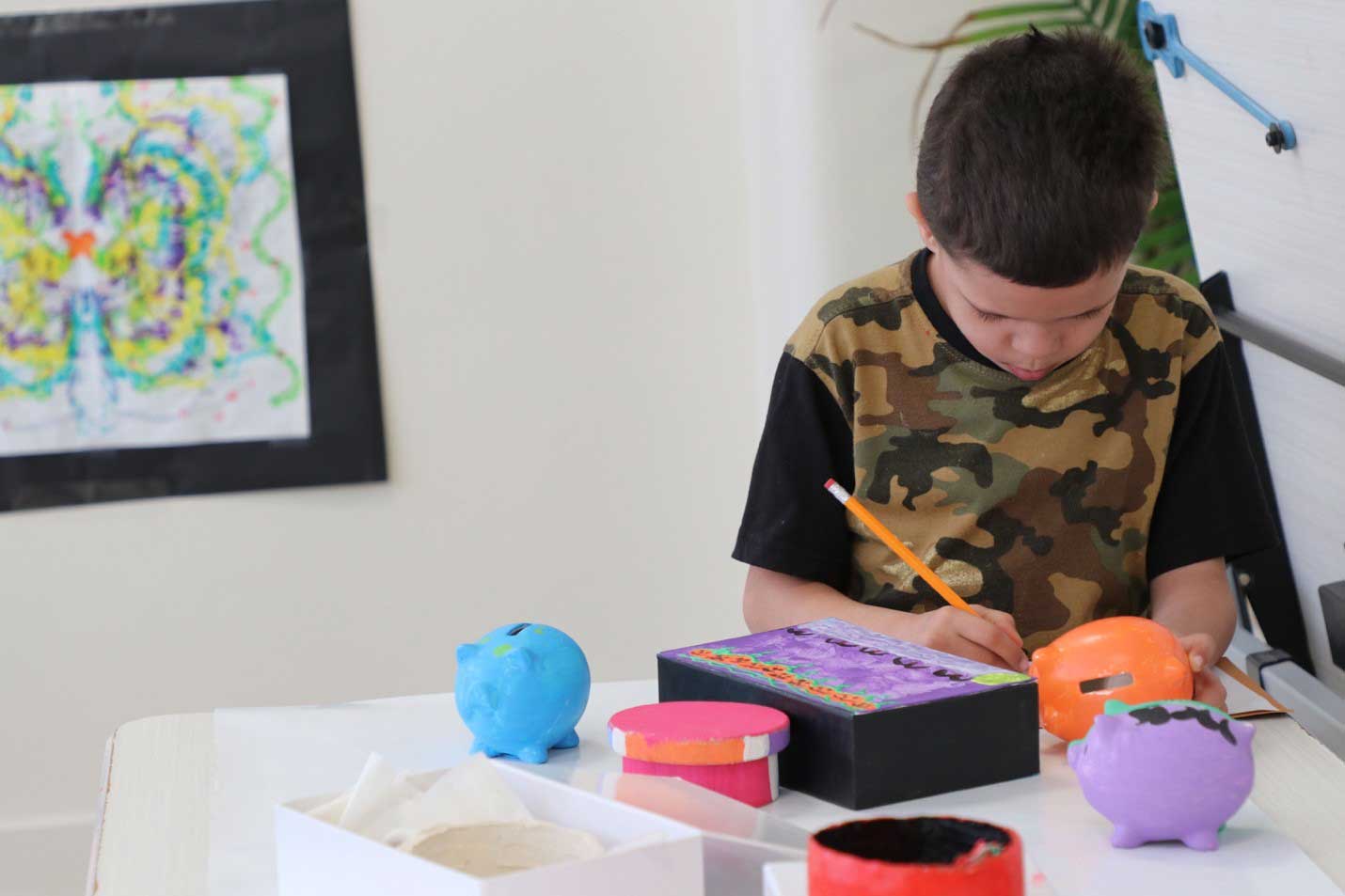
Robert, third grade, concentrates on his crafting.
Immerman pointed out the importance of bringing in volunteers that feel “ready and able to support our young people.” The undergrad students in the PAL program complete coursework ranging from trauma-informed practices to curriculum development and facilitation skills, which prepare them for a wide range of interactions—whether with the HFH youth or with the other organizations they serve.
PAL students first started tutoring HFH youth in the spring, when New York City public schools had moved to a remote learning model and all in-person programs were put on hiatus.
“I provided any academic assistance that they needed, including math, reading, and writing,” said Oscar Delgado, a psychology major and PAL tutor. “I was also just there to get their brains working.”
Delgado played games with the children to jumpstart their day and assist with critical thinking. Thankfully, these tools came in handy when tutoring Robert, who is in third grade. His favorite subjects? Gym and recess, of course.
Angelica, fifth grade, received assistance in her math coursework where she has been learning fractions and introduction to geometry.
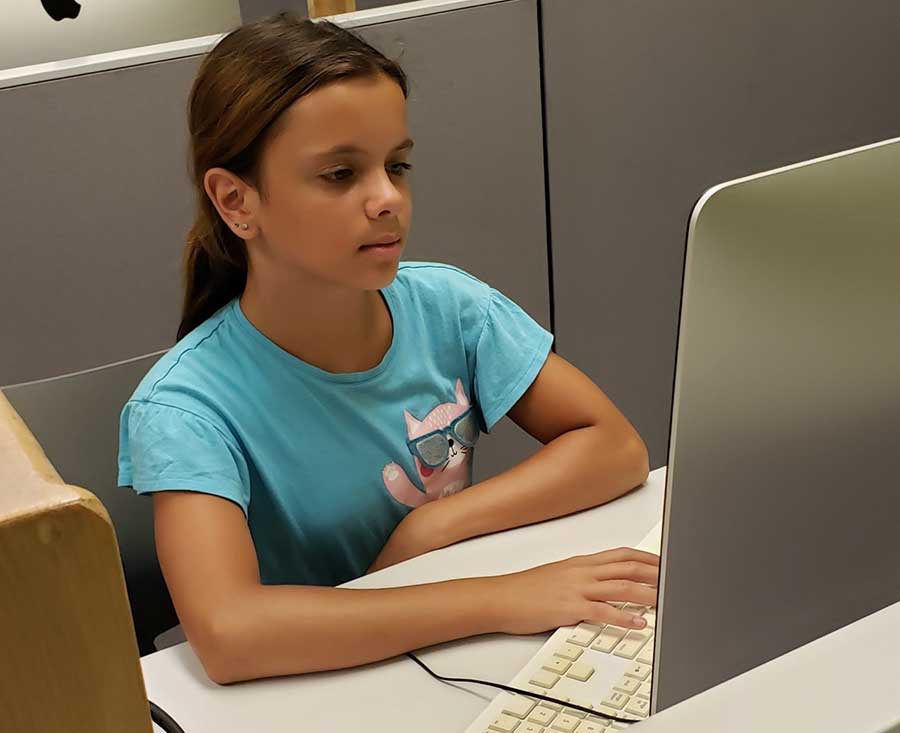
Fifth-grader Angelica focuses on her homework.
“It was good,” Angelica said of her tutoring sessions. “They helped me a lot.” There were challenges that came from learning virtually, but when asked how she felt about being tutored by someone in California, Angelica’s prompt response was emphatic: “That was cool.”
Delgado stressed the importance of human connection that the tutoring provides. “It was nice to be able to talk to someone during this pandemic—especially someone that is going through different experiences than you, someone that is affected differently by this pandemic.”
Michael Chapman, HFH’s director of Afterschool and Recreation at the Saratoga Family Residence, was impressed by the tutors’ ability to connect with the students at HFH and help them complete schoolwork “without a classroom feel.”
The tutoring is more than the “routine mundane tutoring experience,” Chapman said, and parents have “expressed their joy with the personal connection” that PAL provides.
PAL students have also been supporting the HFH staff wherever they can. This includes assistance with the Science Club that introduces new science projects each week and the Youth Council where students discuss topics such as personal development and social concerns.
Chapman emphasized the value of the tutors’ relationships with the students, noting that “having a PAL tutor share their experiences inspires and steers the participants in a manner that may seem imposed if presented by staff.”
The kids aren’t the only ones benefitting from this collaboration. Tech-savvy PAL program participants also helped train HFH staff on using Zoom.
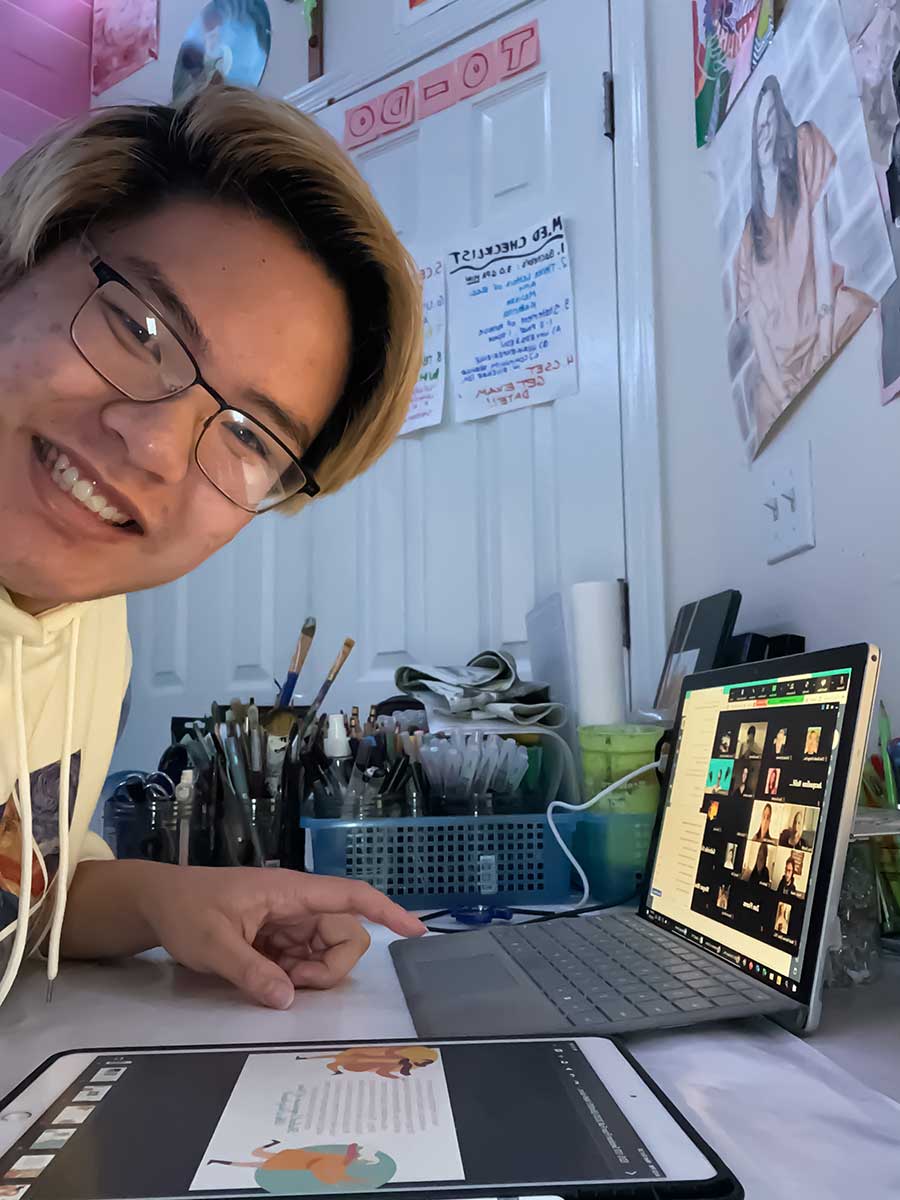
UC San Diego Roosevelt college senior and education sciences major Christian Demesa prepares for a remote PAL session.
Amy Vatne Bintliff, an assistant teaching professor in the PAL program and Christian Demesa, a PAL tutor and undergraduate instructional assistant, have walked HFH staff, who provide direct programming services to students experiencing homelessness, through the many features of Zoom, which has become the main source of interaction, whether it be with the students or with each other.
“We strive to connect with like-minded organizations and people that view the work we do together as a true partnership, where both parties contribute in meaningful ways so that everyone benefits and thrives from the shared experience,” said Immerman. “UCSD’s PAL program is the perfect example of this type of balanced and collaborative relationship.”
Holtzman couldn’t agree more. “It’s a win-win,” she said. “It’s really good for our students to have these kinds of experiences and see what’s going on in the larger world.”
HFH uses a child-centered and education-focused approach in its programming that aims to break the cycle of poverty and promote future success. The goal is to foster positive identities while allowing children to grow, experience and learn as children do.
The students enrolled in UC San Diego’s PAL program approach their tutoring in a similar way. When PAL tutors build relationships with the youth, they become trusted role models who encourage future academic success along with self-confidence.
As the COVID-19 pandemic continues to disrupt the lives of students across the country, much is uncertain. However, for the children at HFH, there is the certainty that a caring PAL tutor will be there to assist them along their academic journey and encourage them as individuals, no matter what this pandemic time brings.
In addition to continuing to work remotely with HFH this fall (and, it’s hoped, beyond), PAL students are continuing to remotely tutor and mentor K-12 students locally. PAL students are participating in such projects such as EJE Academy’s Justice Keepers, Baker Elementary’s Restorative Leaders and Future Teachers, and in a Home Technology Support Project for refugee families in San Diego’s City Heights neighborhood.
While different than in the past, all the new partnerships maintain the program’s decades-long focus on providing academic and socio-emotional support to youth while also immersing UC San Diego students in issues related to equity and access, said PAL Director Holtzman.
PAL has also partnered with several campus programs, including Housing Dining and Hospitality’s Tritons Tutor and the Center for Student Involvement, to help connect UC San Diego undergraduates with local K-12 students during remote learning.
“The goal for most educators is to get back to in-person learning, so we can facilitate deeper, richer interactions and use the space and materials that an actual environment provides,” Holtzman said.
“But a big ‘takeaway’ from remote learning is how vital and vibrant the connection between school and home can be. I hope the ongoing communication between teachers and parents continues and expands over time,” Holtzman said. “And I hope also that we'll continue to use technology to creatively enhance instruction, give more students voice in the classroom and to meaningfully connect students across greater distances.”
Share This:
Stay in the Know
Keep up with all the latest from UC San Diego. Subscribe to the newsletter today.
